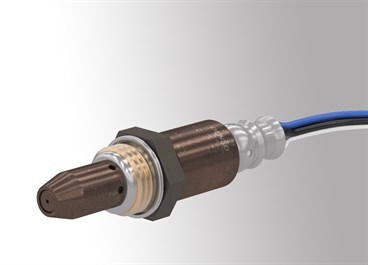Oxygen sensors’ vital role in managing emissions and engine performance
As more emphasis is placed on reducing harmful exhaust emissions, they are taking centre stage in the battle to reduce the environmental impact of today’s vehicles. This is the first of two articles focusing on how these sensors work and how they maximise the efficiency of the modern combustion engine.

As car manufacturers grapple with the challenges of ever stricter emissions targets, the oxygen sensor is required to perform an ever-greater variety of tasks. In this feature, we will explore the sensor’s two standard functions and we will then go on to address more advanced functions in the next newsletter.
The classic function – regulating sensor
The ratio of air and fuel needs to be precise if an internal combustion engine is to perform efficiently. Numerous factors can affect the fuel mix, including temperature, altitude and engine load. It is imperative that the quality of the mixture is measured accurately and regularly.
Oxygen sensors are indispensable in measuring the concentration of oxygen in the exhaust gases.
They convert those measurements into a signal which is then fed back to the engine’s Electronic Control Unit (ECU). The unit uses the information to control the injector timing parameters, monitoring and adjusting levels accordingly.

The engine works most efficiently when the air-fuel mixture is at 14.7 to 1. This is called the stoichiometric-ratio, or Lambda 1 (λ=1). Consequently, the work of these oxygen sensors is often referred to as Lambda regulation.
In enabling the ECU to control that critical mix of air and fuel, oxygen sensors are the most important sensors within the EMS. A failure of the sensor would mean the EMS is no longer receiving feedback on the concentration of oxygen in the exhaust gasses, forcing the engine to run in open loop control which means the engine is “guessing” and is therefore less efficient and produces more harmful emissions.
The second function – diagnostic sensor
The reliability of catalytic converters is critical in controlling emissions from modern petrol engines. Over time, these 3-way converters can slowly degrade or become damaged, which can have severe consequences on the gases that vehicle emits into the atmosphere.
To ensure the vehicle complies with ever stricter emissions standards, a secondary oxygen sensor is added downstream of the catalytic converter to continuingly monitor it is functioning properly.
Carrying out the role of a diagnostic sensor, it measures the concentration of oxygen to ensure the right levels of oxygen are reaching the converter. This is essential if the converter is to fulfil its role in converting harmful substances into gases which are less harmful to the environment.
The chemical reactions taking place in the catalytic converter mean the level of oxygen emitted should be close to zero. The ECU uses the signals it receives from both the regulating and diagnostic oxygen sensors to ensure the engine is performing at its optimal level.
Critical role
Today’s EMSs rely on input from a variety of different sensors, yet the oxygen sensor takes the lead in measuring what is happening within the air-fuel mixture. As regulators work toward further preventing the release of harmful gases into the atmosphere, these sensors will play an ever-greater role in the control of pollutant emission and fuel economy.
We cannot foresee what future challenges lie in store for automotive components, yet we can be sure that as technology and the regulatory environment evolves, these sensors will remain at the forefront of engine design.




















































